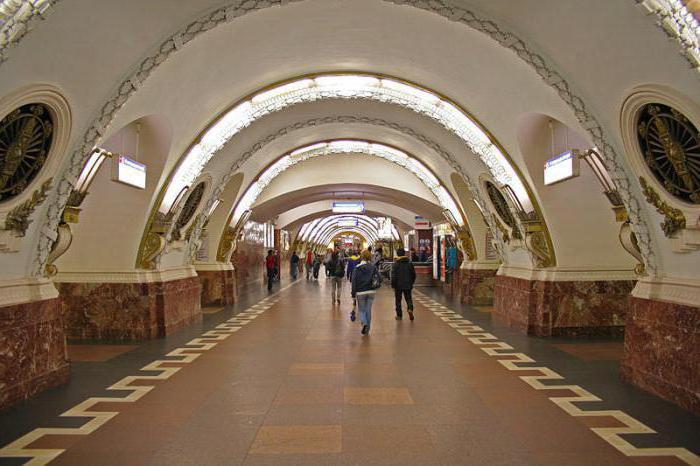Everything always has a beginning. So it was with the St. Petersburg metro when it was Leningrad. Its history began with the opening of the first - the red line and the first station, which was the metro station "Ploshchad Vosstaniya".
Start
The opening of the Vosstaniya Ploshchad metro station in St. Petersburg - Leningrad took place in the fall of 1955, ten years after the end of the war. And five years later a second exit from the lobby was equipped, which led to the building of the Moscow station. Seven years later, Uprising Square became a major interchange hub from the Kirov-Vyborg line to the Nevsky-Vasileostrovskaya line. The transition is carried out both in a pedestrian way - through an underground comfortable passage, and with the help of a short triple escalator, two stairs of which rise to the Mayakovskaya station, and one leads back. It should be noted that the transition "Ploshchad Vosstaniya" - "Mayakovskaya" is one of the busiest in the St. Petersburg metro.

The station starts daily at 5.40 in the morning. St. Petersburg metro station "Ploshchad Vosstaniya" is closed at the entrance from 0.25 hours. This is not very convenient for citizens and guests of the city, since trains arrive at the Moscow station around the clock. In addition, the "Uprising Square" is closed and exit 0.45, which creates additional inconvenience for departing. Agree that you do not want to spend the night in the waiting room if your train leaves shortly before the metro opens.
Historical place
The main pavilion of the Ploshchad Vosstaniya metro station opens its doors at the intersection of Nevsky Prospekt and Vosstaniya Street (formerly Znamenskaya), and on the other hand Ligovsky Prospekt, and opens onto a circular square in front of the Moskovsky Station building. Nearby are the buildings of the Oktyabrskaya Hotel, the first building of which still exists on the corner of Uprising Street and Nevsky Prospekt. In the center of the square stands an obelisk, opened to the 40th anniversary of Victory Day in World War II and dedicated to the defenders of the city. In this place there was a junction of two sections of Nevsky Prospect, which under Peter I began to simultaneously lay towards each other from the Admiralty and from the Alexander Nevsky Monastery (later - the laurels).
The pavilion itself was erected on the site of the wooden Znamensky Church destroyed before the war, the work of Demertsov, about which a black memorial plaque reminds passers-by on its facade .
Features of architecture and decor
The pavilion of the metro station "Ploshchad Vosstaniya" of St. Petersburg has a rounded shape with protrusions-risalits attached to it. On top of it is a rotunda turret, decorated with a small spire.
The lower hall has two platforms and is decorated in two-tone white-brown tones. Artificial brown veined marble was used for cladding. The inscriptions are made in gold letters. The lobby is decorated with bas-reliefs related to the revolutionary events of 1917 in Petrograd and the leader of the Bolsheviks, Vladimir Ilyich Lenin. The main stories tell the townspeople and guests of the city about Lenin's speech to the workers at the Finland Station, about the Aurora firing and the October uprising, or rather, about the storming of the Winter Palace, as well as about Lenin's stay in his hut in Razliv near Petrograd.
Place in infrastructure and urban space
At the moment, St. Petersburg metro station "Ploshchad Vosstaniya" is one of the most walkable and the busiest. It is located almost in the center of the red metro line between the Chernyshevskaya station and the large Vladimirskaya - Dostoevskaya interchange hub, which makes it possible to transfer to the orange branch. Through the station "Ploshchad Vosstaniya" you can reach both the Vyborg side and the Moscow-Narva part of the city.

Around the surface of the station are surrounded by attractions - apartment buildings and mansions mainly of the 19th century, built in an eclectic architectural style. Also nearby, on Uprising Street, in the building of the former Pavlovsk Institute, one of the oldest elite gymnasiums of the city is located. If we move towards Anichkov Bridge, then on the right hand side there will be a building connected with the history of cinema distribution in St. Petersburg-Petrograd - the Dernov apartment building, in the courtyard of which the famous Parisian cinema was located, on the left - the Kozhevnikov apartment building, where the St. Petersburg cinema was located "Moulin rouge".